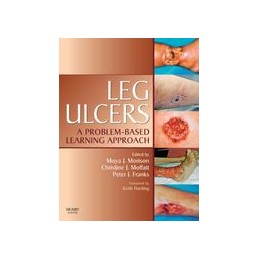Description
This comprehensive text adopts a unique problem-based learning approach; a separate section on case studies helps students link theory to practice. It has been written by an international group of 35 contributors and is in full colour throughout. The breadth and depth of the material should make this book a core reference text and will appeal to both nurses and medical staff involved in the management of leg ulcers.
Product Details
Reference
33543
EAN13
9780723433118
ISBN
9780723433118
Data sheet
Publication date
2006
Issue number
1
Cover
paperback
Pages count
544
Dimensions (mm)
189 x 246
Weight (g)
1260
Section 1: INTRODUCTION Section 2: CASE STUDIES Section 3: LEG ULCER MANAGEMENT: PRINCIPLES AND RESOURCES




 Delivery policy
Delivery policy
 Security policy
Security policy
 Return policy
Return policy
